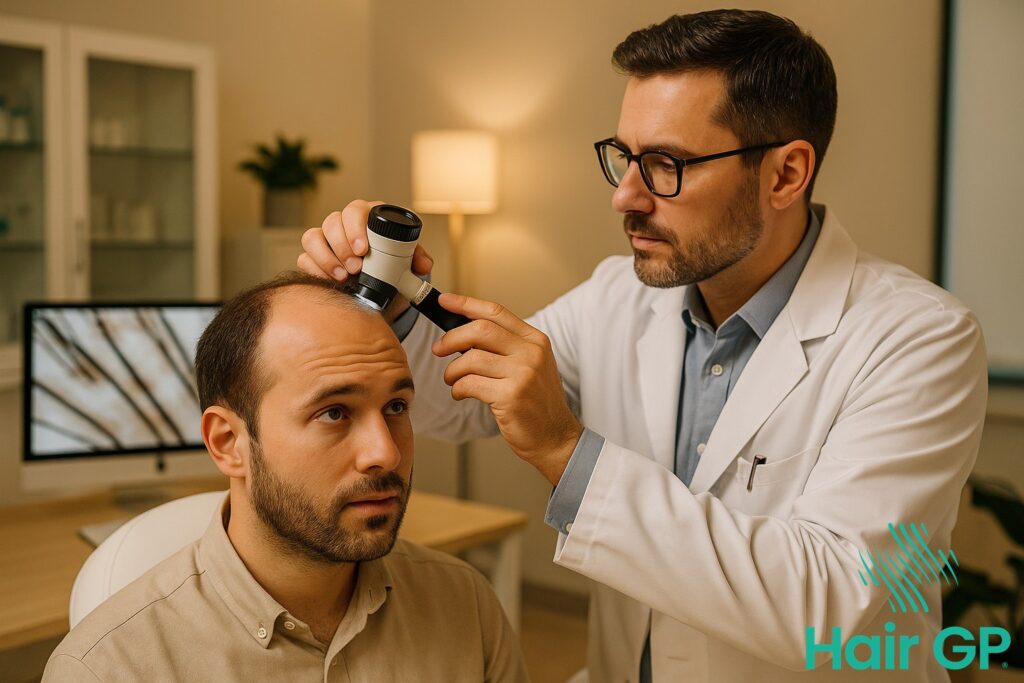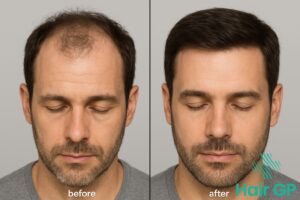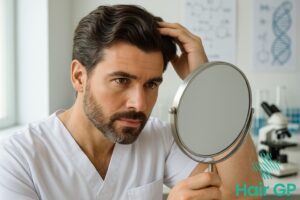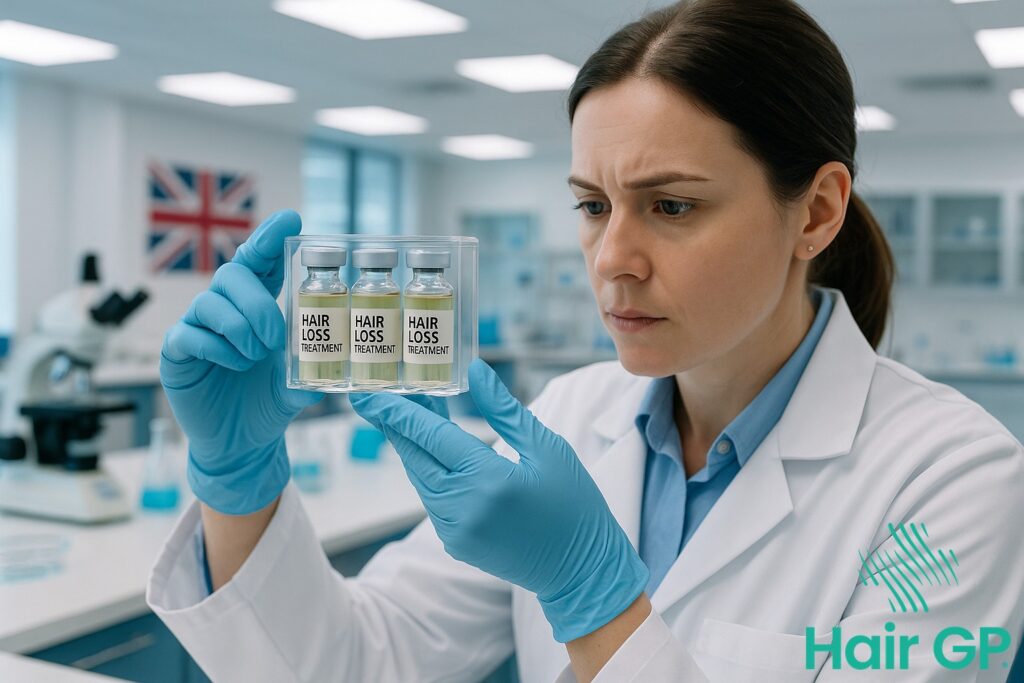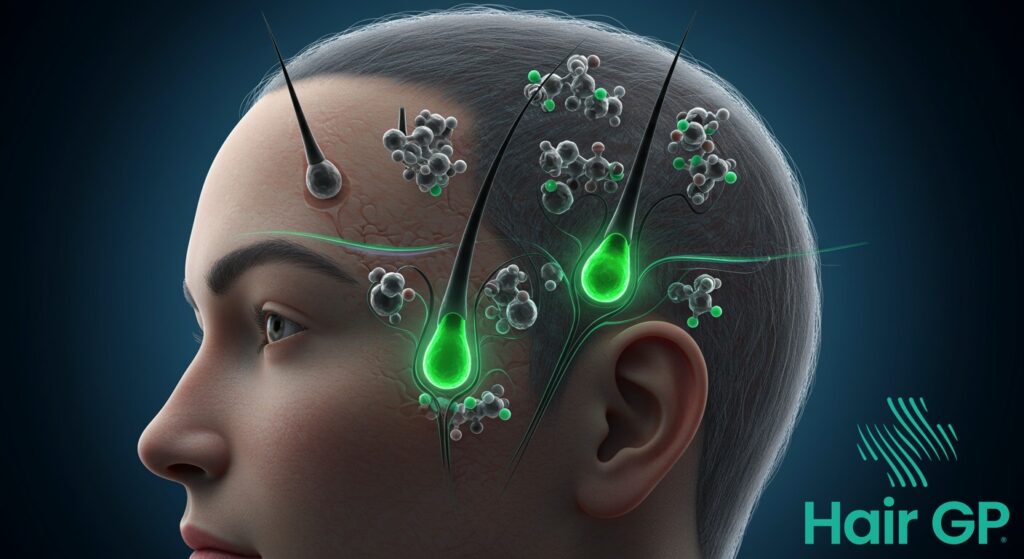Introduction
Hair loss affects millions of people worldwide, leading many to seek innovative solutions beyond traditional treatments. Stem cell hair treatment has emerged as a groundbreaking approach to hair restoration, offering hope to those struggling with thinning hair and baldness. This revolutionary therapy harnesses the body’s natural regenerative capabilities to stimulate hair growth and restore confidence.
However, not everyone experiencing hair loss is a good candidate for stem cell therapy. Understanding who can benefit most from this treatment is crucial for achieving optimal results. Various factors, including the stage of hair loss, overall health status, and individual expectations, play vital roles in determining suitability for this innovative procedure.
This comprehensive guide will explore the fundamental science behind how stem cells work in promoting hair regeneration, whilst identifying the characteristics that make someone an ideal recipient for this treatment. We’ll examine specific health conditions and circumstances that might affect candidacy, helping you understand whether this option aligns with your needs.
Additionally, we’ll compare this modern approach with conventional hair transplant methods, outlining the key differences in procedures and outcomes. You’ll discover what to expect during the consultation process, including the assessments specialists use to evaluate your suitability. We’ll also discuss realistic success rates, timelines for seeing results, and the financial considerations involved in pursuing stem cell hair treatment. By the end of this article, you’ll have a clear understanding of whether you’re a suitable candidate for this promising hair restoration solution.
Key Takeaways – TL/DR
- Ideal candidates have early to moderate hair loss with functioning but dormant hair follicles
- Stem cell therapy works best for those with androgenetic alopecia and diffuse thinning patterns
- Patients with complete baldness or scarring alopecia may not benefit from stem cell treatments
- Success depends on overall health, age, and realistic expectations about treatment outcomes
- Consultation with a specialist is essential to determine individual candidacy
Understanding Stem Cell Hair Restoration
Stem cell hair restoration represents a breakthrough in addressing hair loss through advanced regenerative medicine. This innovative stem cell therapy harnesses the body’s natural healing mechanisms to stimulate dormant hair follicles and promote sustainable hair regrowth. Unlike traditional treatments that merely slow hair loss, stem cell hair restoration works at the cellular level to regenerate hair follicles and restore the natural hair growth cycle.
The treatment involves introducing specialized stem cells directly into areas of hair thinning or baldness, where they activate the scalp’s regenerative processes. Hair follicle stem cells play a crucial role in this process, working alongside introduced therapeutic cells to create an environment conducive to hair regeneration. This approach offers hope for individuals experiencing various forms of hair loss, from androgenetic alopecia to more complex conditions affecting hair follicle function.
How Stem Cells Rejuvenate Hair Follicles
The cellular mechanisms behind stem cell therapy for hair restoration involve complex biological processes that target the root causes of hair loss. When stem cells are injected into the scalp, they begin releasing powerful growth factors and cytokines that stimulate dormant hair follicles back into active growth phases¹.
Stem cell signaling plays a pivotal role in this rejuvenation process. The introduced cells communicate with existing hair follicle stem cells in the bulge region, triggering a cascade of regenerative responses. This signaling pathway activates genes responsible for hair follicle development and maintenance, essentially “waking up” follicles that have entered prolonged dormancy².
Growth factor release represents another critical mechanism in the regeneration process. Stem cells secrete various growth factors including VEGF (vascular endothelial growth factor), which promotes blood vessel formation around hair follicles, and IGF-1 (insulin-like growth factor), which stimulates cell division and hair shaft production. These factors work synergistically to create an optimal environment for follicle activation and sustained hair growth³.
The process of follicle activation involves the differentiation of mesenchymal stem cells into specialized hair follicle components, including dermal papilla cells that form the foundation of new hair structures. This cellular transformation helps restore the hair growth cycle to its natural rhythm, promoting longer anagen phases and healthier hair production.
Types of Stem Cells Used
Different sources of stem cells are utilized in hair restoration treatments, each offering unique advantages for specific patient needs. Adipose-derived stem cells, harvested from the patient’s own fat tissue, are among the most commonly used due to their abundance and ease of collection. These cells demonstrate excellent regenerative properties and show strong potential for regenerating hair follicles through minimally invasive procedures.
Platelet-rich plasma (PRP) is frequently combined with stem cell therapy to enhance treatment effectiveness. While PRP itself contains growth factors that support hair growth, when used alongside stem cells, it provides additional nutrients and signaling molecules that accelerate the regeneration process and improve overall treatment outcomes.
Bone marrow-derived stem cells represent another valuable source, particularly for patients requiring more intensive regenerative intervention. These cells possess high multipotency and can differentiate into various tissue types necessary for complete hair follicle reconstruction. Though extraction requires a more involved procedure, bone marrow stem cells often produce robust results in challenging cases of hair loss.
The choice of stem cell source depends on individual patient factors, including the extent of hair loss, overall health status, and treatment goals. Regardless of the source, all stem cell hair restoration treatments focus on delivering therapeutic cells to areas where they can most effectively stimulate natural hair regeneration processes.
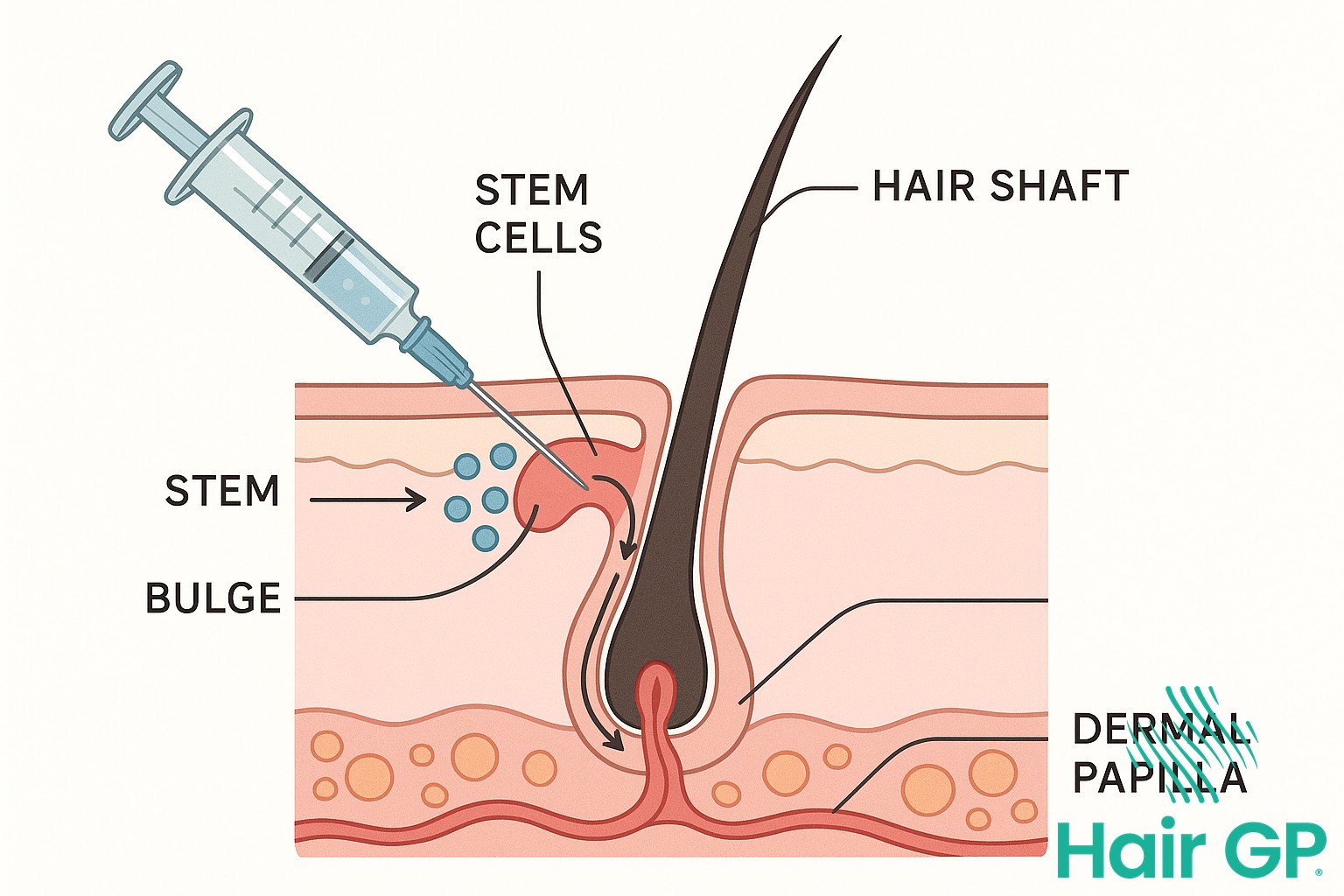
Ideal Candidates for Stem Cell Hair Treatment
Determining who makes a good candidate for stem cell hair treatment involves evaluating several key factors related to hair loss severity, age, and overall health status. While this innovative therapy shows promise for many individuals experiencing thinning hair, certain characteristics typically indicate better treatment outcomes.
Early to Moderate Hair Loss Patterns
The most successful results from stem cell hair treatments typically occur in patients experiencing early to moderate stages of hair loss. Individuals classified as Norwood scale 2-4, which represents mild to moderate recession and thinning, often respond particularly well to this therapy. Those experiencing diffuse thinning across the scalp, where hair density decreases gradually rather than creating completely bald patches, may see significant improvements. Crown thinning, a common pattern in androgenetic alopecia, also tends to respond favourably when addressed in earlier stages before complete follicle death occurs.
Age and Health Considerations
Age plays a crucial role in determining treatment suitability, with individuals between 25-65 years old generally experiencing optimal results. Younger patients within this range often have more responsive follicles and better cellular regeneration capabilities. Good overall health remains essential for treatment success, as the body’s natural healing processes support the stem cell therapy’s effectiveness. Patients without autoimmune conditions typically fare better, as these conditions can interfere with normal hair growth cycles and stem cell function. Additionally, those maintaining healthy lifestyles with proper nutrition and stress management often see enhanced treatment outcomes.
Existing Hair Follicle Health
The presence of dormant follicles rather than completely dead ones significantly impacts treatment success. Dormant follicles retain the potential for reactivation through stem cell stimulation, whilst dead follicles cannot regenerate regardless of treatment. Miniaturised hairs, which appear as fine, barely visible strands, indicate follicles that remain alive but weakened – these often respond well to stem cell therapy. A higher viable follicle count across the treatment area correlates with better outcomes, as the therapy works by rejuvenating existing hair structures rather than creating entirely new follicles. Regular assessment of follicle health through professional evaluation helps determine whether someone possesses sufficient existing hair infrastructure to benefit from this advanced treatment approach.
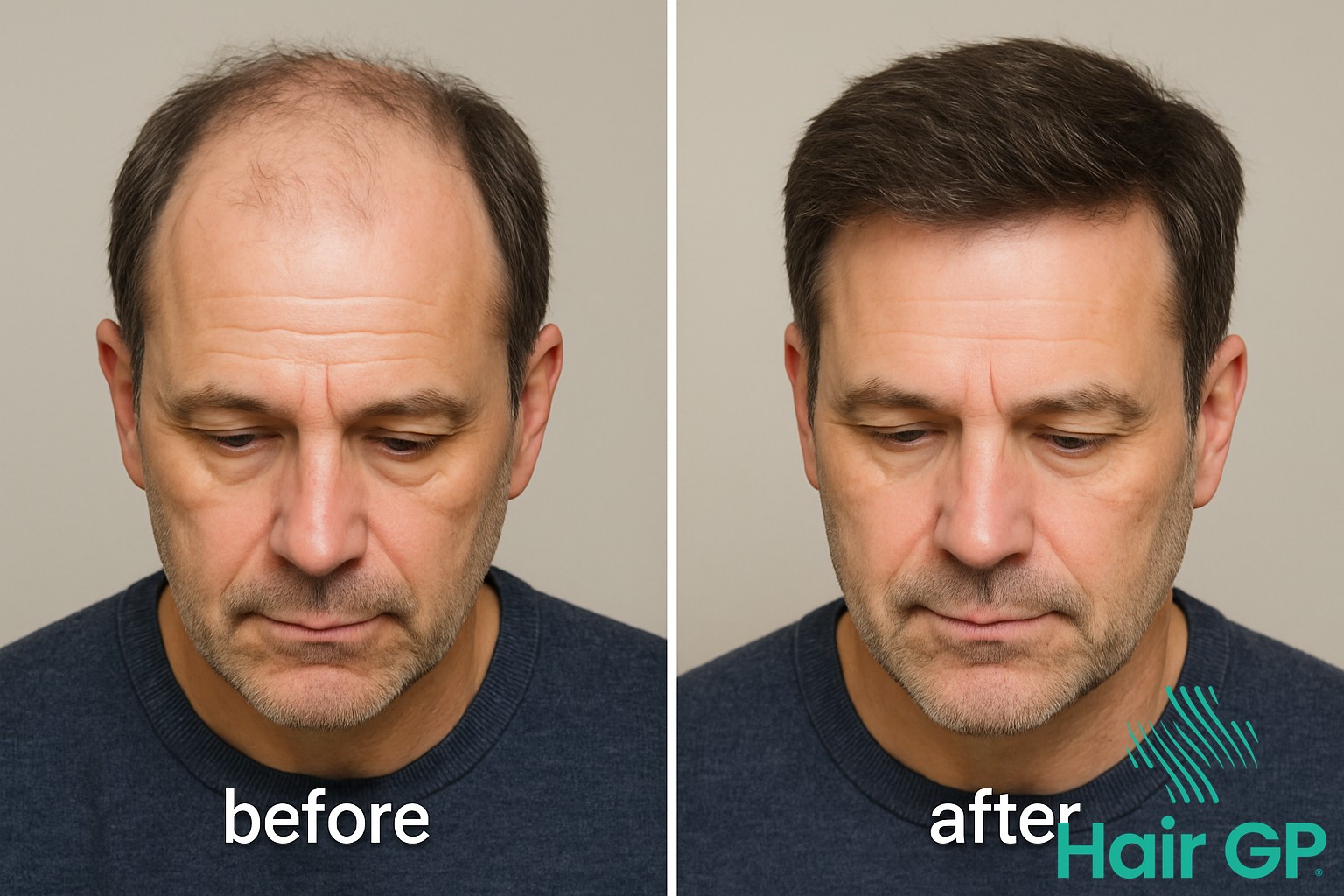
Who May Not Be Suitable Candidates
Whilst stem cell therapy offers promising results for many experiencing hair thinning, certain conditions and circumstances can significantly reduce or eliminate the treatment’s effectiveness. Understanding these limitations helps patients make informed decisions and sets realistic expectations about potential outcomes.
Advanced Baldness and Dead Follicles
Individuals with extensive hair loss, particularly those classified as Norwood 6-7 on the male pattern baldness scale, typically show limited response to stem cell therapy. When the scalp appears shiny and smooth, this indicates that hair follicles have been completely destroyed rather than merely dormant. Without viable follicles to stimulate, even the most advanced stem cell treatment cannot regenerate hair in these areas. The therapy requires at least some remaining follicular structures to work with, making it unsuitable for those with complete baldness in targeted regions.
Medical Contraindications
Several health conditions present absolute contraindications for stem cell hair therapy. Patients with active cancer must avoid this treatment, as stem cells could potentially accelerate tumour growth. Blood disorders, particularly those affecting clotting or platelet function, pose significant risks during the procedure. Additionally, individuals with severely compromised immune systems, whether from disease or immunosuppressive medications, cannot safely undergo this treatment. These medical conditions take precedence over cosmetic concerns, and alternative hair restoration options should be explored.
Scarring and Inflammatory Conditions
Active scalp conditions create hostile environments that prevent stem cells from functioning effectively. Cicatricial or scarring alopecia permanently destroys hair follicles through inflammation and fibrosis, leaving no viable structures for stem cells to repair. Patients with active scalp psoriasis experience chronic inflammation that interferes with cellular regeneration processes. Similarly, ongoing scalp infections must be completely resolved before considering treatment. Even conditions like alopecia areata, whilst sometimes responsive to other therapies, may not benefit from stem cell treatment during active flare-ups due to the autoimmune attack on follicles. These inflammatory processes must be controlled before stem cell therapy can be considered a viable option.
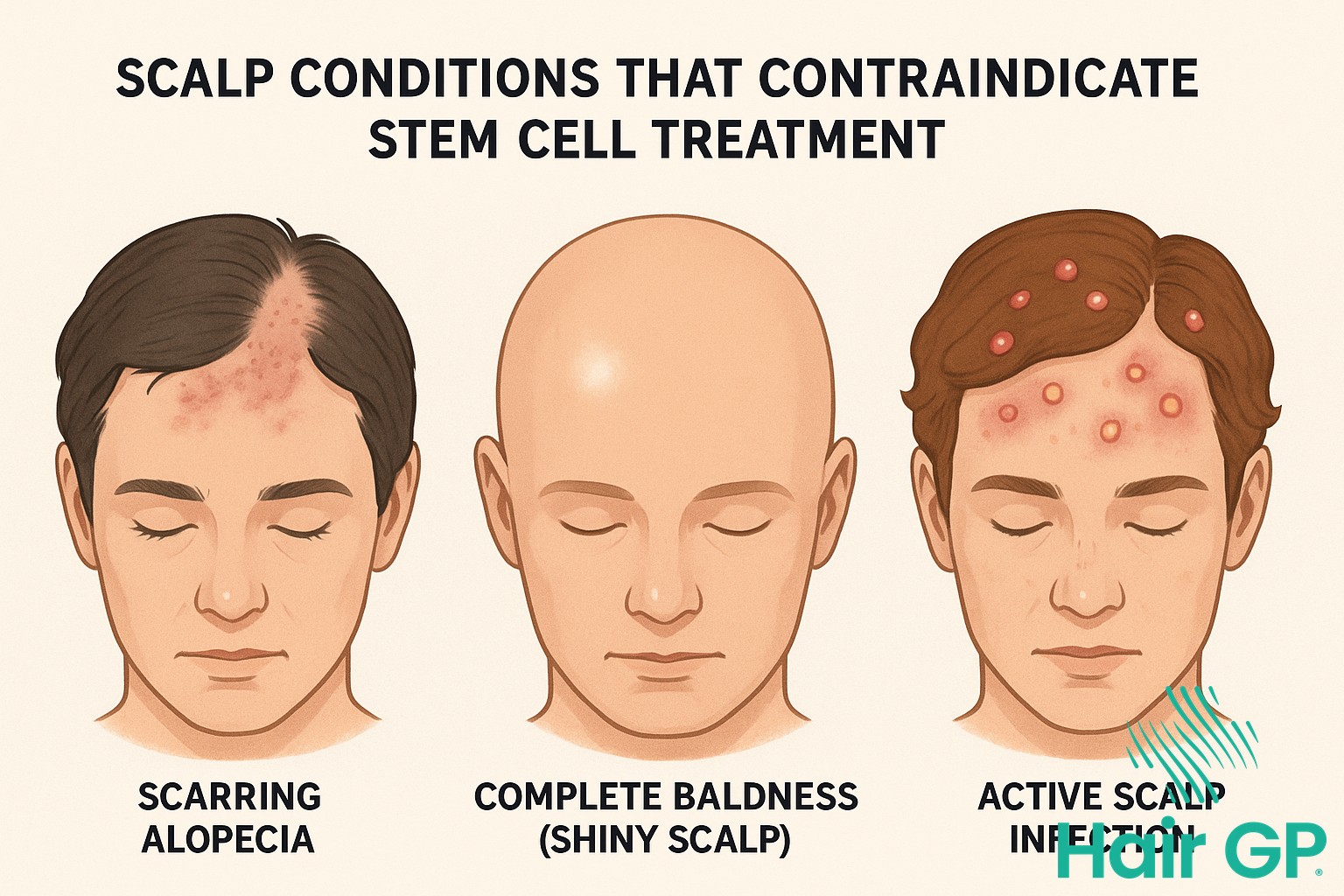
Comparing Stem Cell Therapy to Traditional Hair Transplants
When considering hair restoration techniques, patients often weigh the benefits of stem cell transplants against traditional hair transplants. These two approaches represent fundamentally different philosophies in treating hair loss, each offering distinct advantages depending on individual circumstances and treatment goals.
Traditional hair transplants, including FUE (Follicular Unit Extraction) and FUT (Follicular Unit Transplantation) methods, involve surgically relocating healthy hair follicles from donor areas to balding regions. This hair transplant approach has been the gold standard for decades, providing predictable results through physical redistribution of existing hair.
Unlike traditional hair transplants, stem cell transplants work by stimulating the body’s natural regenerative processes rather than moving existing follicles. This stem cell procedure introduces therapeutic cells that activate dormant hair follicles and promote new hair growth through cellular regeneration. The fundamental difference lies in regeneration versus relocation – stem cells aim to restore hair follicles that have stopped functioning, while a hair transplant moves healthy follicles from one area to another.
Candidacy Requirements Differences
The eligibility criteria for each treatment type vary significantly based on the underlying approach. Traditional hair transplants require adequate donor area hair density, typically from the back and sides of the scalp, which must remain stable throughout the patient’s lifetime. Candidates need sufficient healthy follicles to harvest, making this option less suitable for individuals with extensive hair loss or poor donor areas.
Stem cell transplants offer broader candidacy options, particularly for patients with diffuse thinning or insufficient donor hair for traditional procedures. The extent of hair loss plays a different role in stem cell treatments – while traditional hair transplants work best for localized balding patterns, stem cell procedures can address more widespread thinning by targeting multiple areas simultaneously.
Age factors also influence candidacy differently. Traditional hair transplants typically require patients to be older, with established hair loss patterns, to ensure optimal planning and prevent future transplanted hair from appearing isolated as natural hair continues to thin. Stem cell treatments may be suitable for younger patients experiencing early-stage hair loss, as the goal is preserving and strengthening existing follicles rather than creating permanent hairlines.
Procedure and Recovery Comparison
The invasiveness levels between these hair restoration techniques differ substantially. Traditional hair transplants are surgical procedures requiring local anesthesia, incisions, and follicle extraction, whether through strip harvesting (FUT) or individual extraction (FUE). The hair transplant process typically takes 6-8 hours and involves creating recipient sites and carefully placing each follicle.
Stem cell procedures are minimally invasive, involving injections of therapeutic cells into the scalp. The treatment usually takes 1-2 hours and requires no incisions or sutures. This fundamental difference impacts the entire patient experience, from procedure day through recovery.
Downtime varies dramatically between approaches. Traditional hair transplants require 7-10 days of initial healing, with visible scabs and potential swelling. Patients must avoid strenuous activities, washing restrictions apply, and returning to normal activities takes several weeks. Stem cell treatments typically allow patients to resume normal activities within 24-48 hours, with minimal visible signs of treatment.
Scarring risks represent another key distinction. Traditional hair transplants inevitably create scarring at donor sites – linear scars from FUT procedures or tiny circular scars from FUE extraction. While modern techniques minimize scarring, some degree of donor site marking is unavoidable. Stem cell procedures carry virtually no scarring risk, as they involve only needle injections that heal without permanent marks.
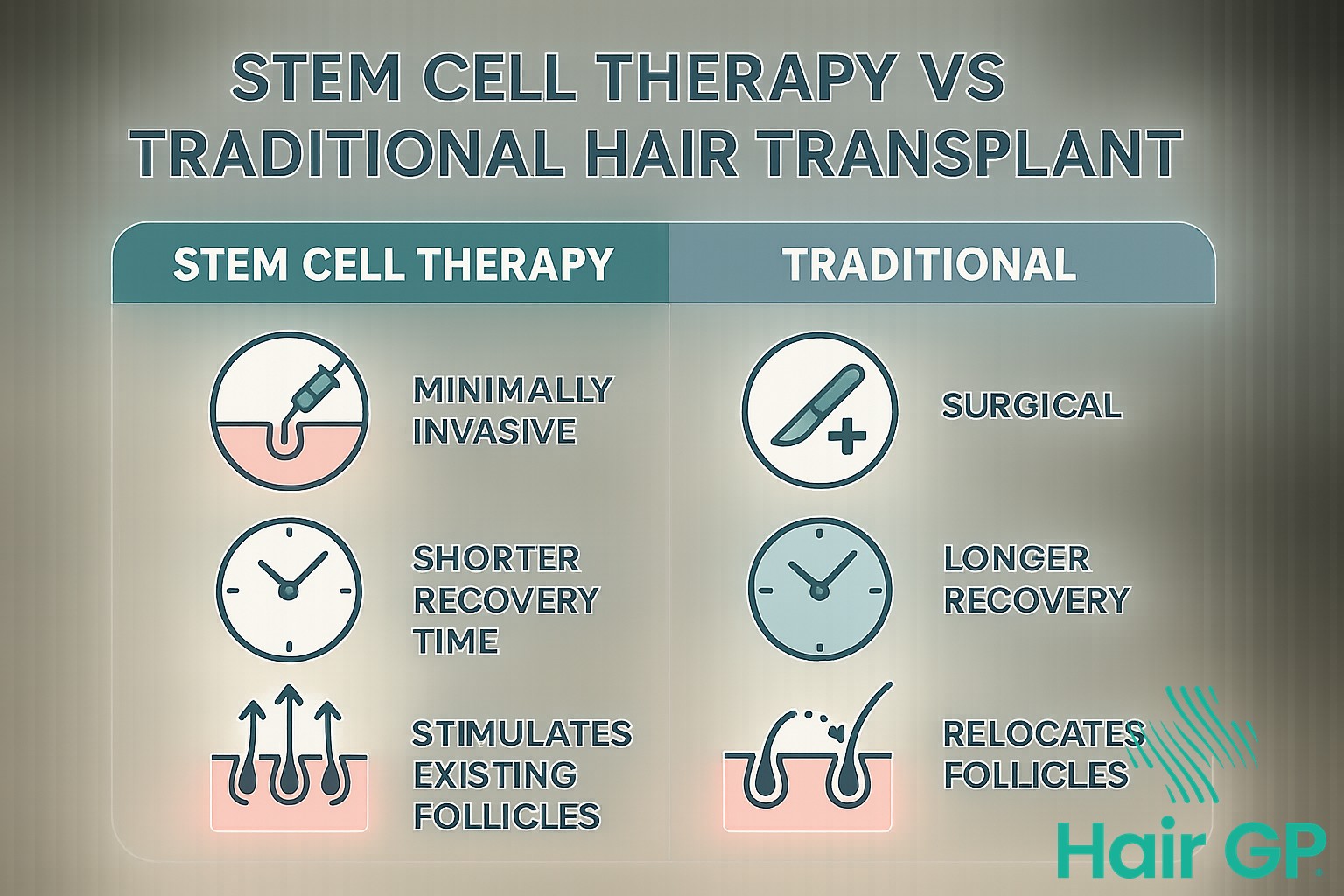
The Consultation and Assessment Process
The journey toward stem cell treatment begins with a comprehensive consultation designed to evaluate your candidacy and develop a personalized treatment plan. This professional assessment process involves multiple diagnostic steps to determine whether stem cell therapy can effectively address your specific hair loss pattern and overall scalp health.
During your initial visit, specialists conduct thorough evaluations using advanced diagnostic tools to assess hair density, follicle health, and scalp condition. This detailed analysis helps determine if stem cell treatment represents the most suitable option for your individual needs and circumstances.
The consultation process typically takes 60-90 minutes and involves both physical examination and detailed discussion of your hair loss history, treatment goals, and expectations. Specialists use this information to create a comprehensive picture of your condition and recommend the most appropriate treatment approach.
Initial Scalp Evaluation
The physical assessment begins with advanced diagnostic tools that provide detailed insights into your scalp health and hair follicle condition. Trichoscopy, a specialized microscopic examination, allows specialists to examine hair follicles at high magnification, revealing important details about follicle size, density, and overall health that aren’t visible to the naked eye.
A pull test is performed to assess hair fragility and the current state of your hair growth cycle. This simple diagnostic involves gently pulling small sections of hair to determine how many strands are shed, providing valuable information about hair strength and whether follicles are in active growth phases.
Density measurements using calibrated tools help establish baseline hair density across different areas of your scalp. These measurements are crucial for tracking treatment progress and determining realistic expectations. Specialists may also use digital photography to document current conditions and create reference points for future comparisons.
Medical History Review
Your medical background plays a crucial role in determining stem cell treatment suitability. Specialists review current medications to identify any drugs that might affect hair growth or interfere with stem cell therapy effectiveness. Certain medications, including blood thinners or immunosuppressants, may require adjustments before treatment.
Family history of hair loss provides important genetic insights that help specialists understand your hair loss pattern and predict treatment outcomes. This information helps determine whether your condition is likely to respond well to stem cell therapy and helps set realistic expectations for results.
Previous treatments and their outcomes are carefully documented to understand what approaches have been tried and their effectiveness. This review helps specialists avoid repeating unsuccessful treatments and identifies factors that might improve scalp health and treatment success. Understanding your treatment history also helps identify any underlying conditions that might need addressing before beginning stem cell therapy.
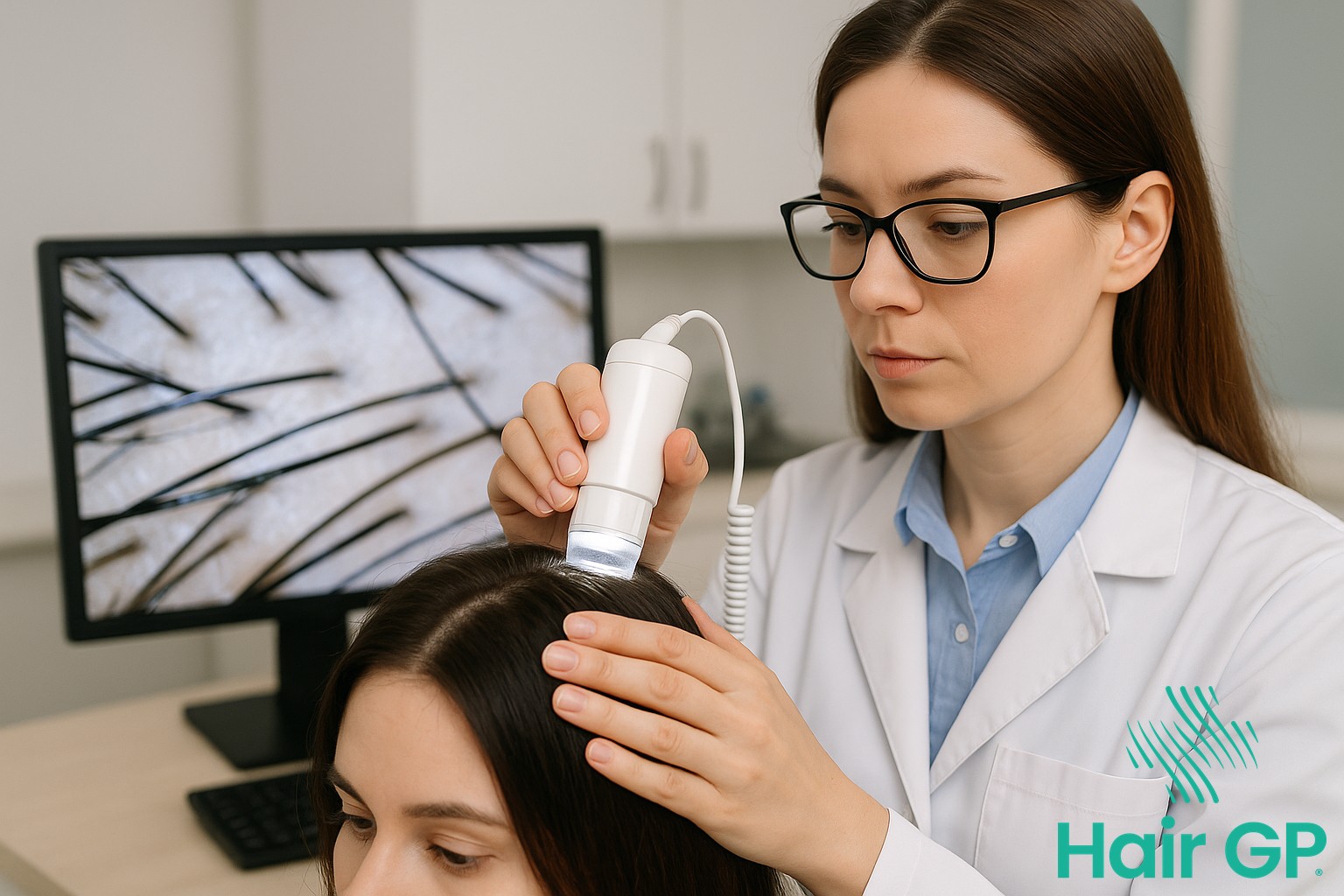
Success Factors and Realistic Expectations
Setting realistic expectations represents a crucial component of successful stem cell hair therapy outcomes. Patients should understand that hair regrowth typically occurs gradually over several months rather than immediately following treatment. Individual responses vary considerably based on multiple factors including age, overall health status, and the extent of existing hair loss.
Treatment effectiveness depends significantly on early intervention, as stem cells work best when dormant follicles remain viable. Patients experiencing recent hair thinning generally achieve more noticeable improvements compared to those with long-standing baldness. The quality of new hair growth often improves progressively, with initial fine hairs typically becoming thicker and stronger over subsequent growth cycles.
Realistic timelines suggest visible improvements may begin appearing after three to four months, with optimal results typically manifesting between six to twelve months post-treatment. Patients should anticipate gradual changes rather than dramatic transformations. Regular follow-up assessments help monitor progress and determine whether additional sessions might enhance outcomes.
Success factors extend beyond the treatment itself. Maintaining scalp health through proper nutrition, stress management, and avoiding harsh chemical treatments supports the therapeutic process. Patients who combine stem cell therapy with comprehensive hair care routines often experience better long-term results. Understanding that stem cell therapy works by supporting natural hair growth processes rather than creating entirely new follicles helps establish appropriate expectations. This treatment approach aims to optimise existing follicular potential, resulting in healthier hair production rather than miraculous restoration of completely bald areas.
Cost Considerations and Treatment Planning
Understanding the financial investment required for stem cell hair treatments helps patients make informed decisions about their hair loss journey. Treatment costs vary considerably based on several factors, including the extent of hair loss, the number of sessions required, and the specific technology used. Geographic location and clinic expertise also significantly influence pricing, with specialised centres in major cities typically charging more than regional facilities.
Insurance coverage for hair restoration procedures remains limited, as most providers classify these treatments as cosmetic rather than medical necessities. Patients should verify their policy details and explore flexible payment plans or medical financing options that many clinics offer. Some facilities provide package deals for multiple sessions, which can reduce overall costs when treating hair loss comprehensively.
Maintenance requirements represent an important long-term consideration. Unlike other treatments that require ongoing medication or frequent touch-ups, stem cell therapy often provides more lasting results. However, patients may benefit from periodic booster sessions every 12-18 months to maintain optimal outcomes. The initial treatment plan typically involves 3-6 sessions spaced several weeks apart, followed by assessment of results.
Successful treatment planning begins with realistic expectations and a thorough consultation. Clinics should provide detailed treatment timelines and discuss how stem cell therapy compares with hair loss treatments alternatives. Patients experiencing progressive hair loss may need to budget for future sessions, as addressing new areas of thinning ensures consistent coverage and natural-looking results throughout their restoration journey.
Conclusion
Determining whether you’re a good candidate for stem cell hair treatment requires careful consideration of multiple factors discussed throughout this guide. Hair loss patterns, age, overall health, and existing follicle viability all play crucial roles in predicting treatment success. While stem cells offer revolutionary potential for hair restoration, they work best for individuals with specific characteristics, including moderate hair thinning, good scalp health, and realistic expectations about outcomes.
The therapy’s ability to potentially regenerate new hair follicles makes it particularly appealing for those who haven’t responded well to conventional treatments. However, success depends significantly on individual circumstances, making professional evaluation essential. Qualified specialists can assess your unique situation, examining factors like donor area quality, medical history, and hair loss progression to determine suitability.
Before pursuing stem cell hair treatment, schedule consultations with experienced practitioners who can provide personalised assessments. They’ll help you understand realistic outcomes, potential risks, and alternative options if you’re not an ideal candidate. Remember that whilst this innovative therapy shows promising results for many, it’s not universally suitable. Making an informed decision based on expert guidance ensures you choose the most appropriate hair restoration approach for your specific needs and circumstances.
Frequently Asked Questions
Results from stem cell hair treatments typically last 2-5 years, depending on individual factors like age, genetics, and ongoing hair loss progression. Many patients opt for maintenance treatments every 12-18 months to sustain optimal results.
Yes, stem cell therapy can be effective for female pattern baldness, especially in early to moderate stages. Women often respond well to treatment as they typically retain more viable hair follicles than men with similar hair loss patterns.
The procedure involves minimal discomfort. Local anesthesia is used during stem cell harvesting and injection. Most patients describe it as less painful than traditional hair transplant surgery, with only mild soreness lasting 24-48 hours.
Yes, stem cell therapy often works well in combination with other treatments like PRP, minoxidil, or finasteride. Your specialist can create a comprehensive treatment plan that maximizes results through multiple approaches.
Initial improvements typically appear within 2-3 months, with more noticeable results at 4-6 months. Full results usually develop over 9-12 months as hair follicles complete their growth cycles and new hair matures.
- Rajendran, R. L., et al. (2021). Growth factors and cytokines in hair follicle development and cycling. Experimental Dermatology, 30(3), 333-347.
- Gentile, P., & Garcovich, S. (2019). Systematic review of clinical studies on hair follicle regeneration using stem cell therapy. Journal of Clinical Medicine, 8(9), 1454.
- Takeo, M., et al. (2020). Cellular mechanisms of hair follicle stem cell activation. Nature Reviews Molecular Cell Biology, 21(5), 295-309.

